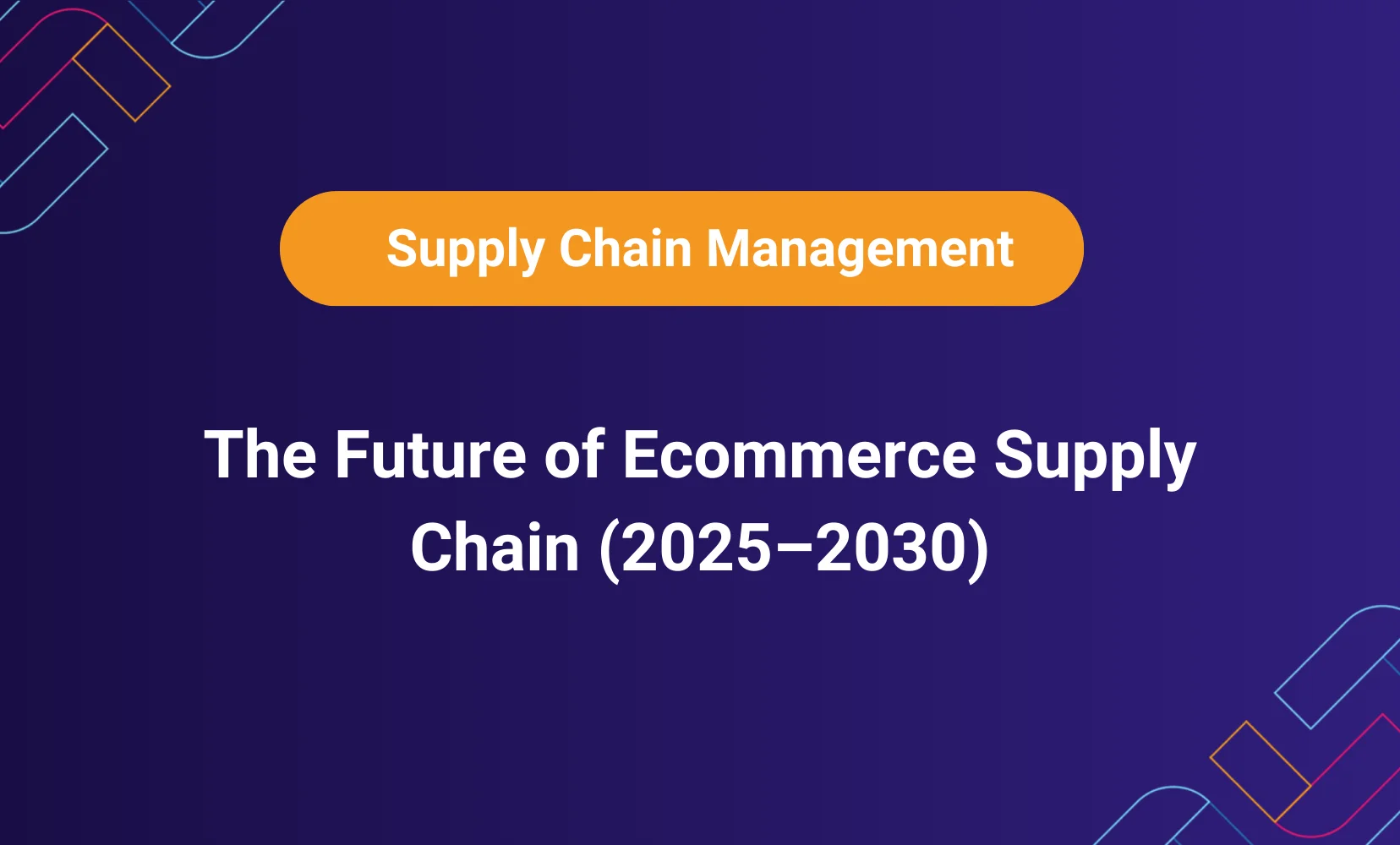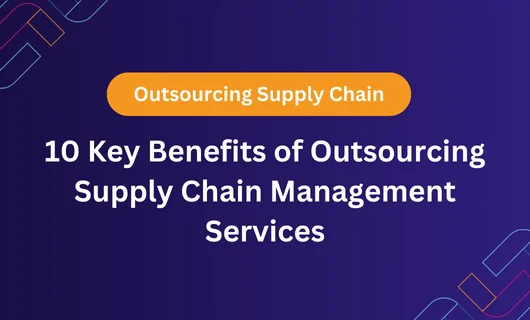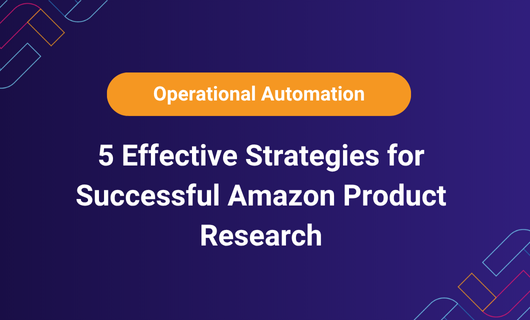Scaling a 7–9 figure ecommerce brand in 2025 isn’t just about driving sales. Behind every order lies a web of operational challenges slow fulfillment, inventory mismatches, warehouse inefficiencies, and disconnected systems. These gaps eat into margins, frustrate customers, and prevent smooth scaling. Leveraging solutions like SAP SCM enables businesses to streamline supply chain operations, optimize inventory, and connect all systems seamlessly.
With End-to-End Supply Chain Automation, ecommerce businesses can eliminate stockouts, automate fulfillment across channels, and reduce labor costs all while boosting customer satisfaction and profitability.
What’s happening now? Ops leaders still rely on manual fulfillment, spreadsheets, and disconnected tools that can’t keep up with today’s pace.
What would better look like? A fully automated supply chain that integrates Shopify, Amazon, and your 3PLs eliminating errors, reducing costs, and unlocking scalable growth.
Why End-to-End Supply Chain Automation Matters
Ecommerce customers in 2025 expect fast, accurate delivery, real-time inventory updates, and seamless experiences. Brands that fail to deliver risk abandoned carts, negative reviews, and shrinking margins.
Automation connects every piece OMS, WMS, ERP, 3PL partners, and marketplaces into a single, real-time ecosystem. The result? Speed, accuracy, and scalability.
Common Ecommerce Pain Points
-
Manual order processing on Shopify and Amazon leading to errors
-
Inventory inaccuracies resulting in overselling or stockouts
-
Labor-intensive warehouse operations driving up costs
-
Disconnected OMS, WMS, ERP systems slowing decisions
What is the biggest risk of manual ecommerce fulfillment?
Manual workflows increase order errors, late deliveries, and poor customer satisfaction.
Key Benefits of Automation for Shopify & Amazon Brands
Real-time inventory visibility prevents overselling
Faster order processing enhances customer satisfaction
Reduced labor costs (20–40%) improve efficiency
Improved cash conversion cycles unlock working capital
How does supply chain automation improve profit margins?
Automation reduces labor costs, prevents lost sales due to stockouts, and shortens the cash conversion cycle.
How to Automate Fulfillment on Shopify and Amazon
Step-by-Step Implementation:
Integrate Stores – Connect Shopify, Amazon, Walmart, and eBay into a unified OMS/WMS system.
Automate Order Routing – Orders are sent automatically to 3PL partners or in-house warehouses.
AI-Driven Demand Forecasting – Minimize overstock and stockouts by predicting demand.
Track KPIs – Monitor order cycle time, fulfillment accuracy, and cost per order.
Can I automate both Shopify and Amazon fulfillment together?
Yes. Platforms like Brankit OMS, ShipBob, ShipStation, and Linnworks centralize orders and automate workflows across marketplaces.
Trade-Offs and Risks
Upfront integration costs vs. long-term savings
Staff training for new workflows
3PL SLAs must be maintained
Is supply chain automation risky?
The main risks involve upfront cost and change management. However, ROI is typically reached within 12–18 months.
Real-World Ecommerce Automation Examples
Shopify Brand Scaling with Automation
A beauty brand using Brankit OMS doubled shipping speed, reduced errors by 60%, and boosted customer retention.
Amazon FBA Inventory Sync
A fashion retailer avoided overselling by syncing inventory across Amazon and Shopify, preventing lost peak-season revenue.
Warehouse + 3PL Integration
An electronics retailer integrated in-house and 3PL operations. OMS ensured correct SKU allocation, cutting mis-shipments and improving delivery times.
What industries benefit most from ecommerce automation?
High-order-volume sectors like fashion, beauty, electronics, supplements, and home goods see the biggest gains.
ROI and Cost Savings of Automation
Key ROI Drivers:
Cash Conversion Cycle – Faster fulfillment speeds up revenue recognition.
Labor Savings – Automation replaces manual picking, packing, and data entry.
Stockout Prevention – AI forecasting reduces lost sales by 15–25%.
Customer Satisfaction – Faster shipping + fewer errors = loyalty.
How do I calculate ROI on supply chain automation?
Track order fulfillment time, labor cost per order, stockout rate, and churn. ROI typically appears within 12–18 months.
Ecommerce Examples & ROI
Shopify Automation: Routing reduces errors and doubles shipping speed
Amazon FBA: Inventory sync prevents overselling and lost revenue
3PL/Warehouse Integration: OMS ensures accurate SKU allocation and order volume
ROI Table
| Metric | Manual Process | Automated Supply Chain |
|---|---|---|
| Order Processing Time | 6–12 hrs | 5–15 mins |
| Labor Costs | High | 20–40% reduction |
| Stockouts | Frequent | Rare |
| Cash Conversion Cycle | Slow | Faster |
What labor savings can I expect from automation?
Brands typically see 20–40% reduction in manual picking, packing, and data entry.
Will automation prevent stockouts?
AI-driven forecasting and real-time inventory tracking minimize stockouts and overselling.
Key Implementation Steps for Brands in 2025
- Audit Current Operations: Identify bottlenecks in order processing and inventory tracking
Map Automation Touchpoints: Across OMS, WMS, ERP, and marketplaces
Select Scalable Platforms: Ensure compatibility with Shopify, Amazon, and future marketplaces
Staff Training & KPI Monitoring: Fulfillment accuracy, cycle times, labor costs, inventory health
Continuous Improvement: Leverage insights from automation dashboards
Do I need a dedicated IT team to run automation?
No. Most modern solutions are plug-and-play and require minimal IT support.
The Future of Ecommerce Supply Chain (2025–2030)

AI Forecasting – Near 95% accuracy in predicting demand
Robotics in Warehouses – Automated picking, packing, loading
Blockchain Transparency – Compliance and trust
Sustainability Focus – Waste reduction and greener last-mile delivery
What trends will shape ecommerce supply chains in 2030?
AI, robotics, blockchain, and sustainability will define the next dec
Tools and Platforms for Ecommerce Automation
- Brankit OMS – Centralized order + inventory
- ShipBob / ShipStation – Third-party fulfillment automation
- Linnworks – Multi-channel order management
- AI Forecasting Tools – Demand prediction for Shopify & Amazon
Frequently Asked Questions
It’s the use of AI-driven systems that automate inventory, order fulfillment, and logistics for ecommerce brands.
It reduces manual errors, speeds up order processing, and improves customer satisfaction.
Yes, modern platforms support seamless ERP/WMS integration.
Typically 20–40% reduction in manual fulfillment tasks.
Real-time inventory and AI forecasting minimize overselling and stockouts.
Initial costs exist, but ROI comes from labor savings, faster cycles, and fewer errors.
Yes, platforms support Shopify, Amazon, Walmart, eBay, and others.
Track metrics like order cycle time, labor cost per order, stockout rate, and cash conversion cycle.
Ready to Automate Your Supply Chain?
Manual fulfillment can’t scale in 2025. If you’re serious about reducing costs, eliminating stockouts, and boosting profits, it’s time to upgrade.
Schedule a free strategy call with Brankit today and see how supply chain automation can transform your ecommerce operations.





